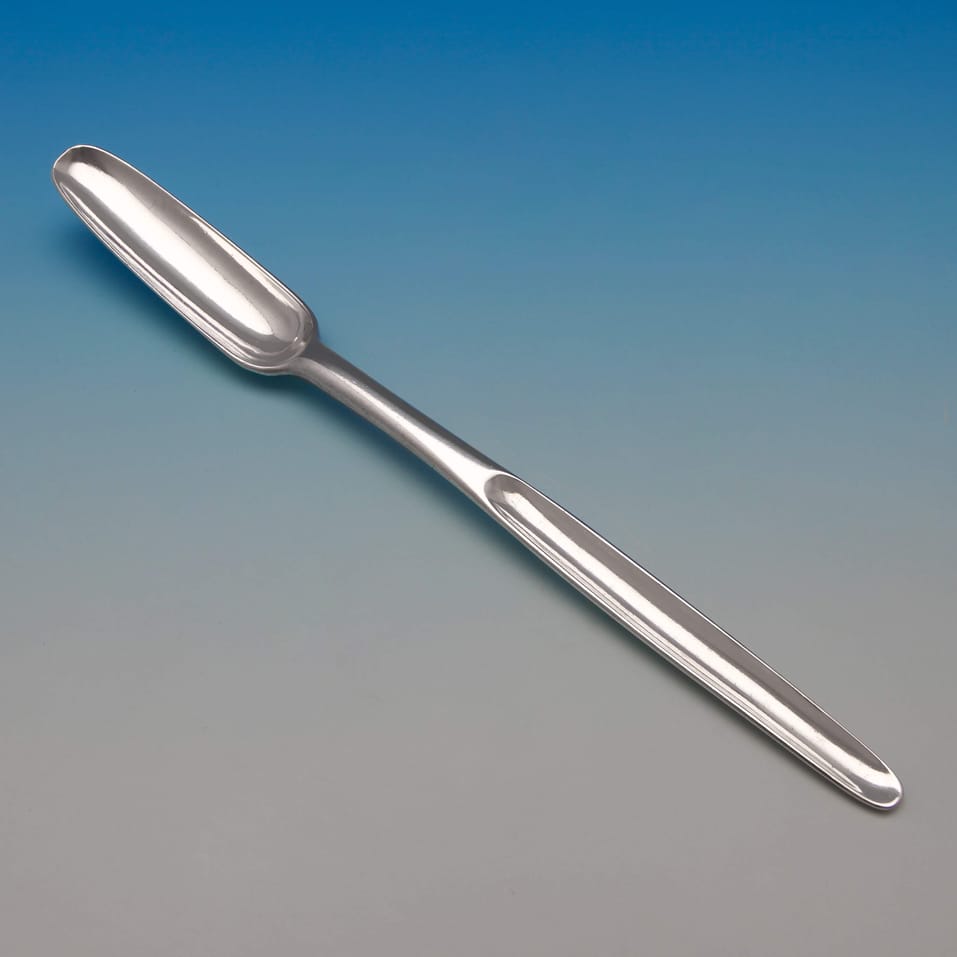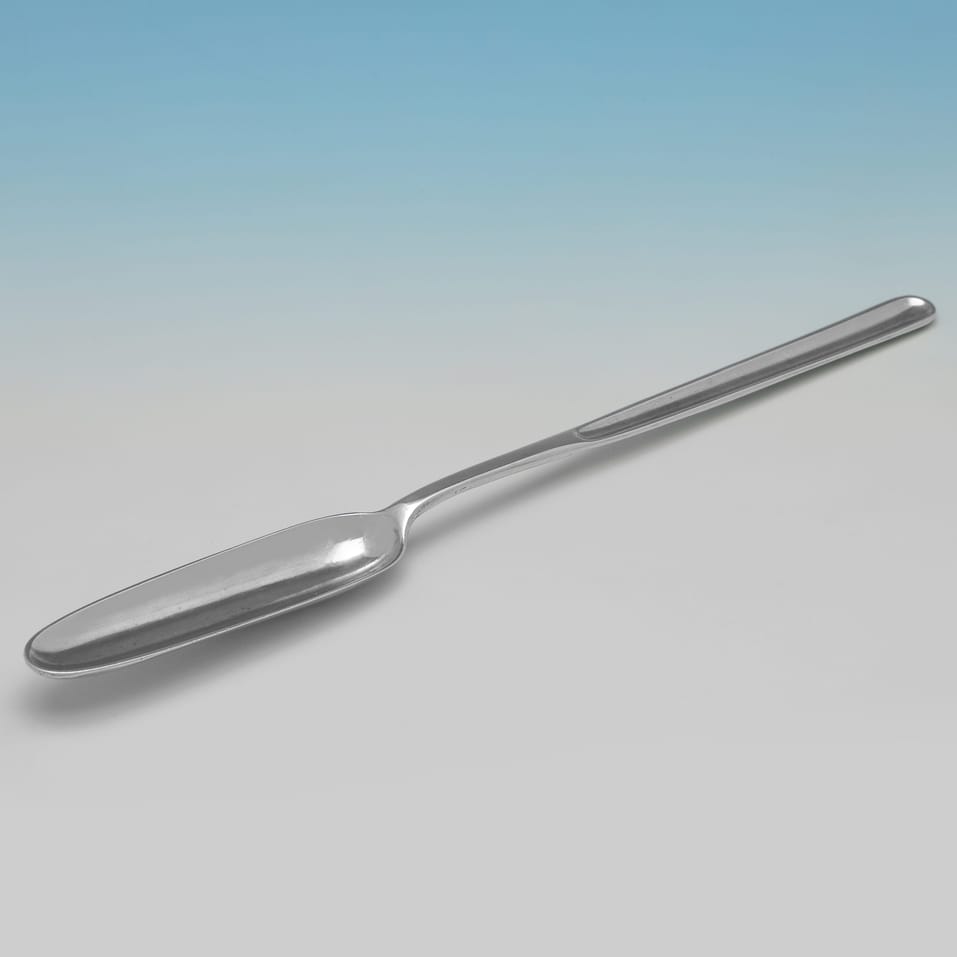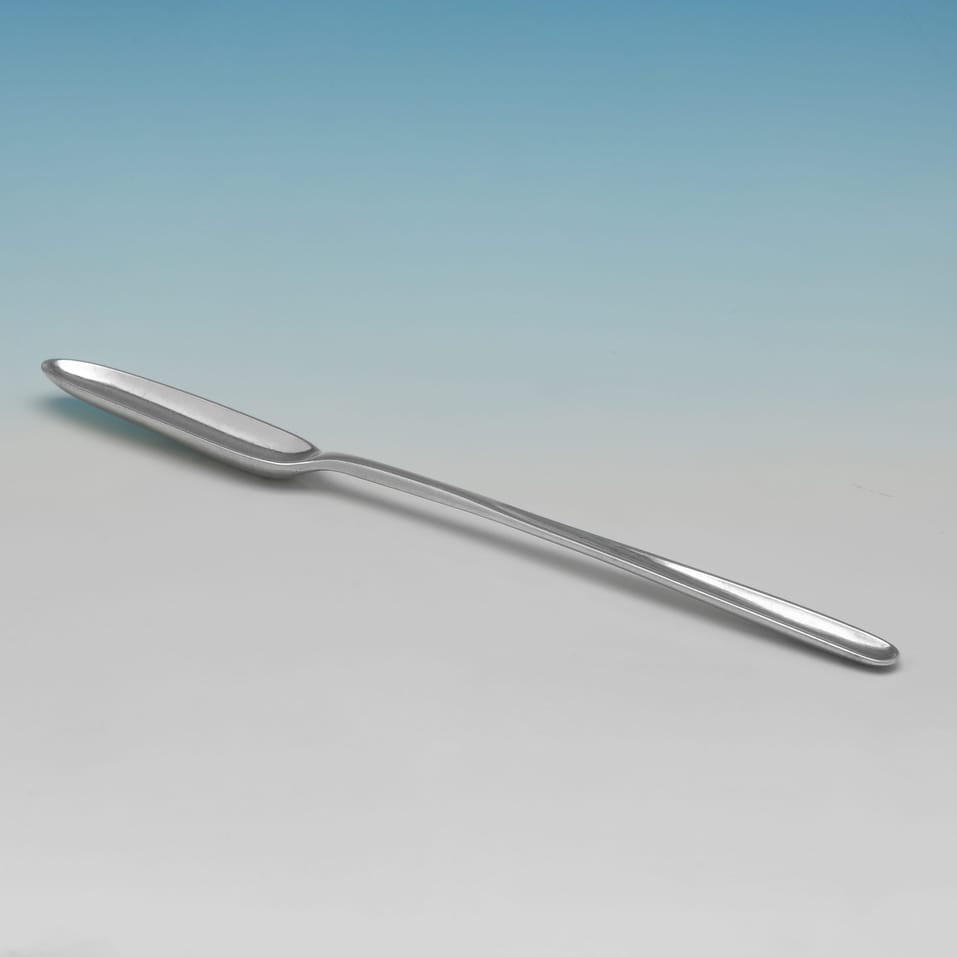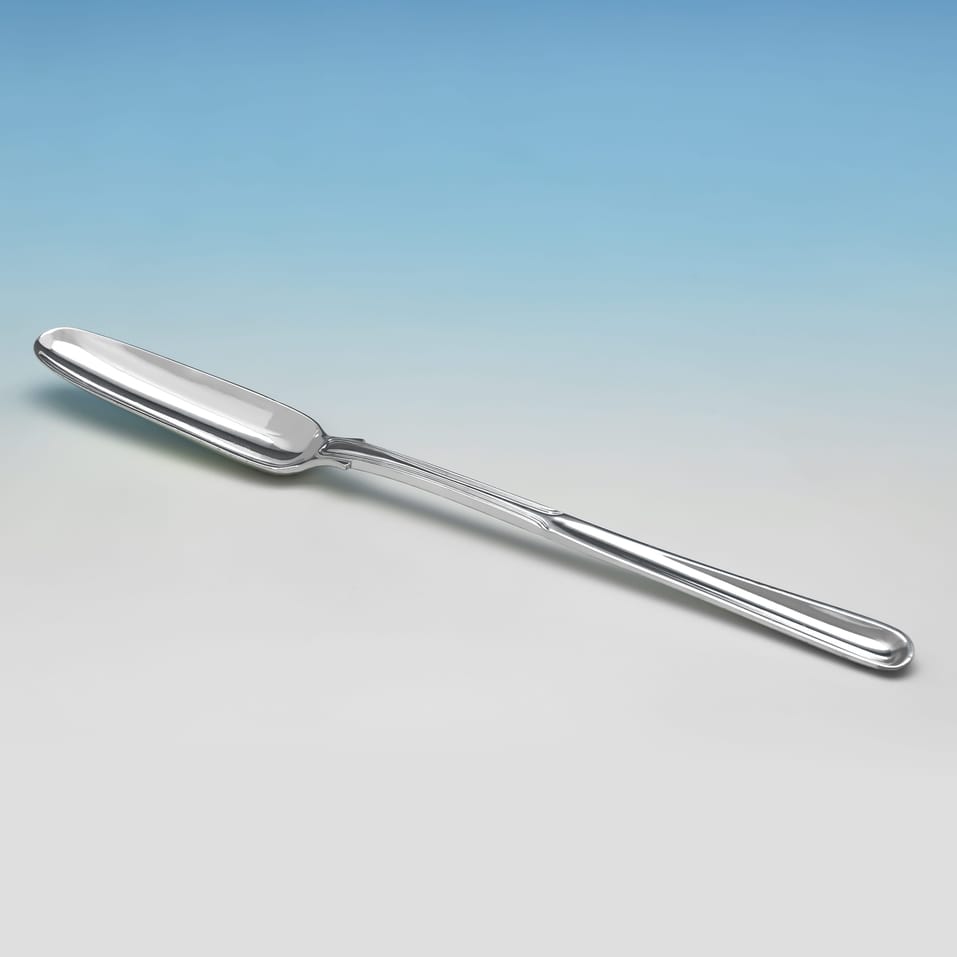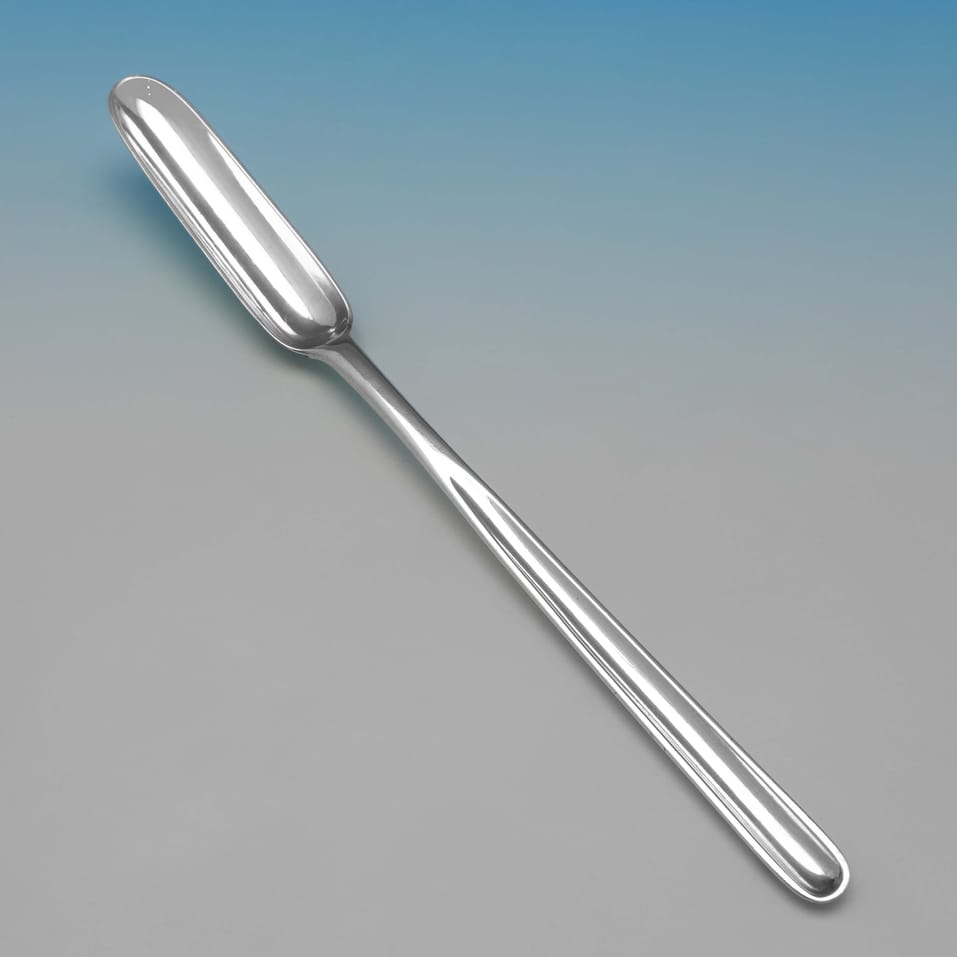Antique Silver Marrow Scoops
The idea of the marrow scoop was developed during the 1680’s, when the marrow spoon was first created as a utensil purely for the eating of bone marrow, which at the time was considered a delicacy, highly prized for its richness. The marrow scoop itself was actually first seen at the start of the 18th Century, and its design soon became more popular than the earlier form. In the 19th Century marrow scoops were made to match sets of flatware, however they fell out of common use towards the end of the Victorian period.
5 results
L0432 : Sterling Silver Marrow Scoop
Hallmarked In 1736
Hallmarked in London in 1736, this handsome, George II, Antique Sterling Silver Marrow Scoop, is plain in style with engraved original initials to the reverse. The marrow scoop measures 8"(20cm) long, with a maximum width of 3/4"(2cm) and weighs 1.7 troy ounces.
£375
L7320 : Sterling Silver Marrow Scoop
Hallmarked In 1785
Hallmarked in London in 1785 by Stephen Adams I, this handsome, Antique, George III period, Sterling Silver Marrow Scoop, is of traditional form, and is engraved in the back with contemporary initials. The marrow scoop measures 8.75"(22cm) long, by 0.75"(2cm) wide, and weighs 1.23 troy ounces.
£395
L7321 : Sterling Silver Marrow Scoop
Hallmarked In 1775
Hallmarked in London in 1775 by Stephen Adams I, this handsome, George III Period, Antique Sterling Silver Marrow Scoop, is of traditional form, and is engraved with a crest to the reverse. The marrow scoop measures 8.75"(22cm) in length, and weighs 1.9 troy ounces.
£445
L7532 : Sterling Silver Marrow Scoop
Hallmarked In 1828
Hallmarked in London in 1828 by William Chawner II, this handsome, Antique, George IV period, Sterling Silver Marrow Scoop, is in fiddle thread and shell pattern. The marrow scoop measures 9.25"(23.5cm) wide, by 0.75"(2cm) deep and weighs 1.91 troy ounces.
£475
d4n08 : Sterling Silver Scottish Provincial Marrow Scoop
Hallmarked In 1802
Made by Peter, Anne and William Bateman in London in 1802, and marked with William Ferguson of Elgin's shop mark, this very handsome, and rare to find Scottish provincial, George III period Antique Sterling Silver Marrow Scoop, is of traditional form. The marrow scoop measures 8.75"(22.5cm) in length, and weighs 1.6 troy ounces.
£695
